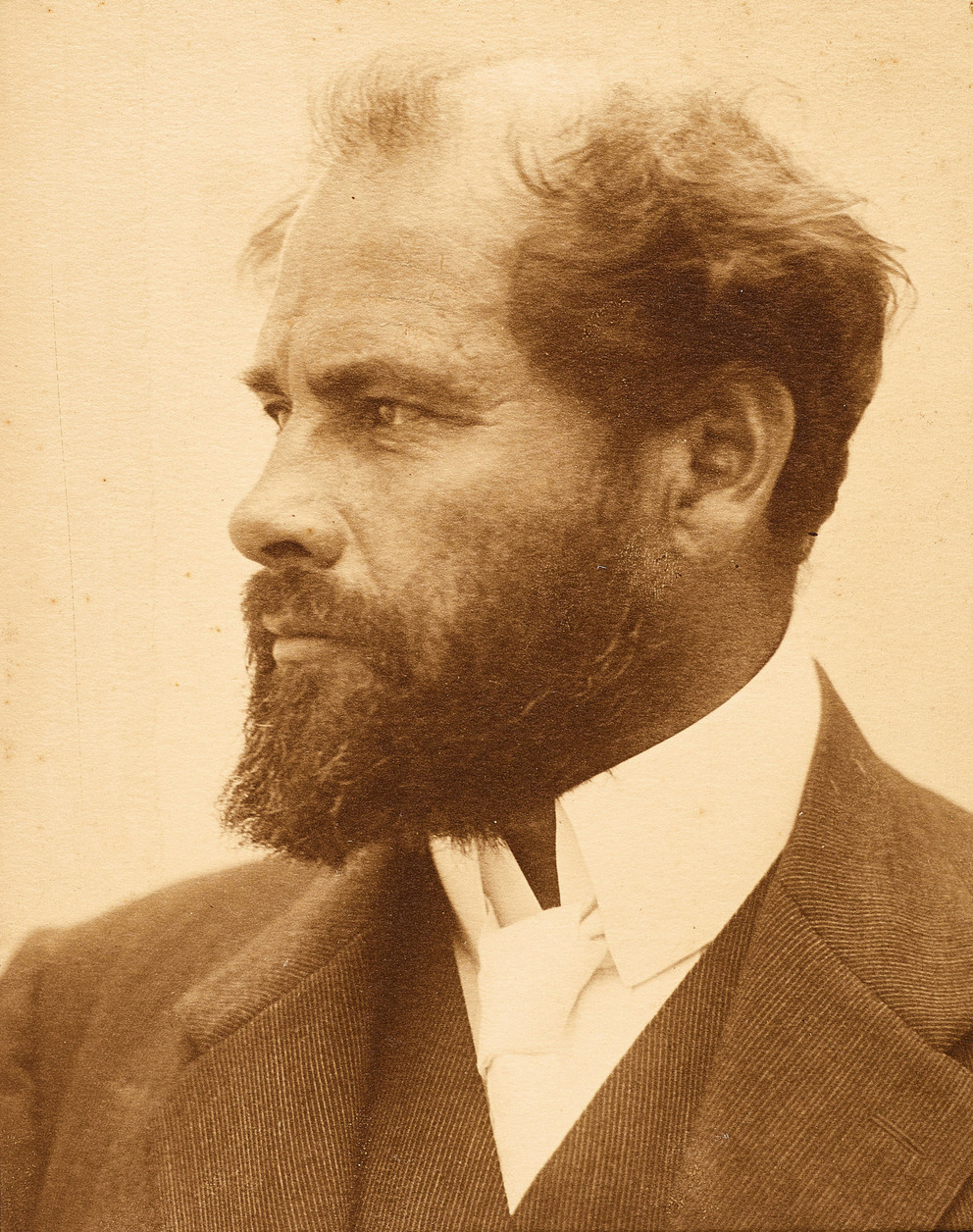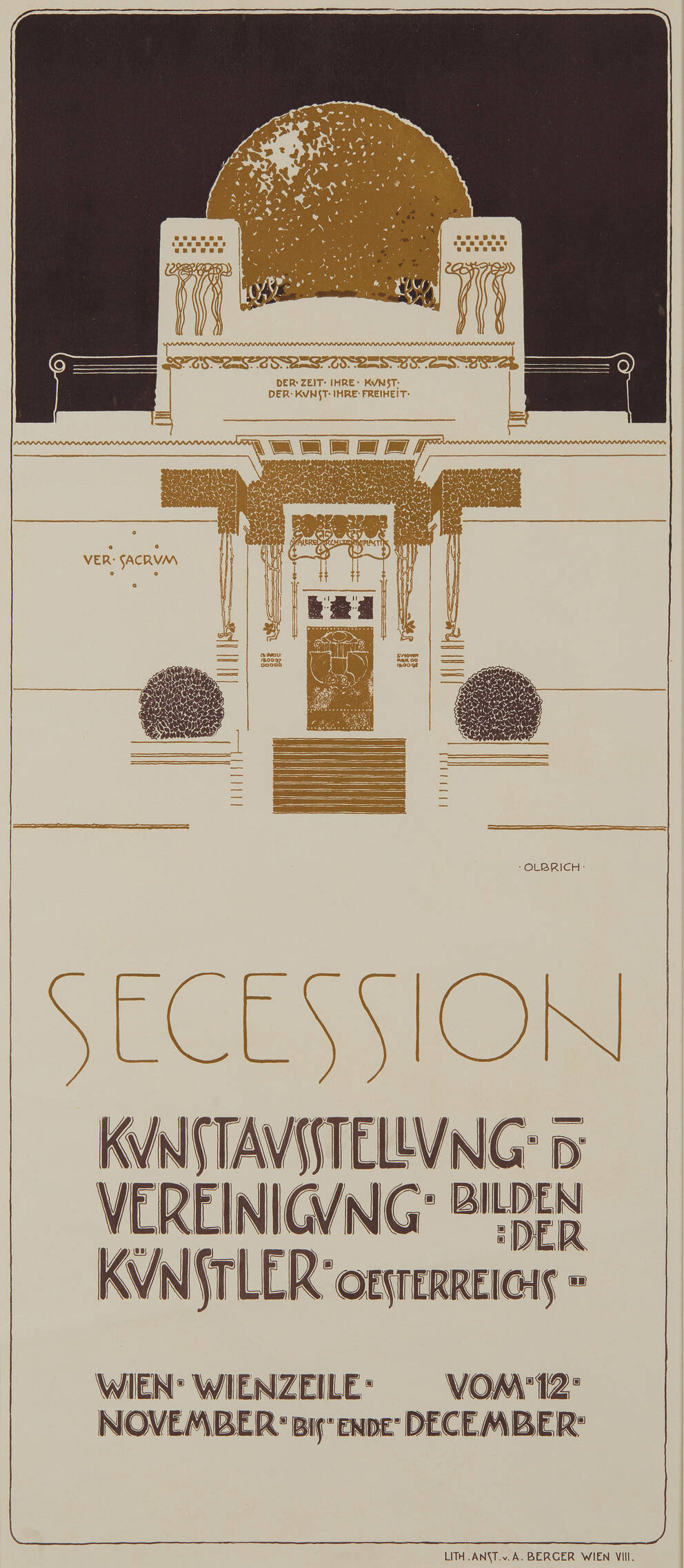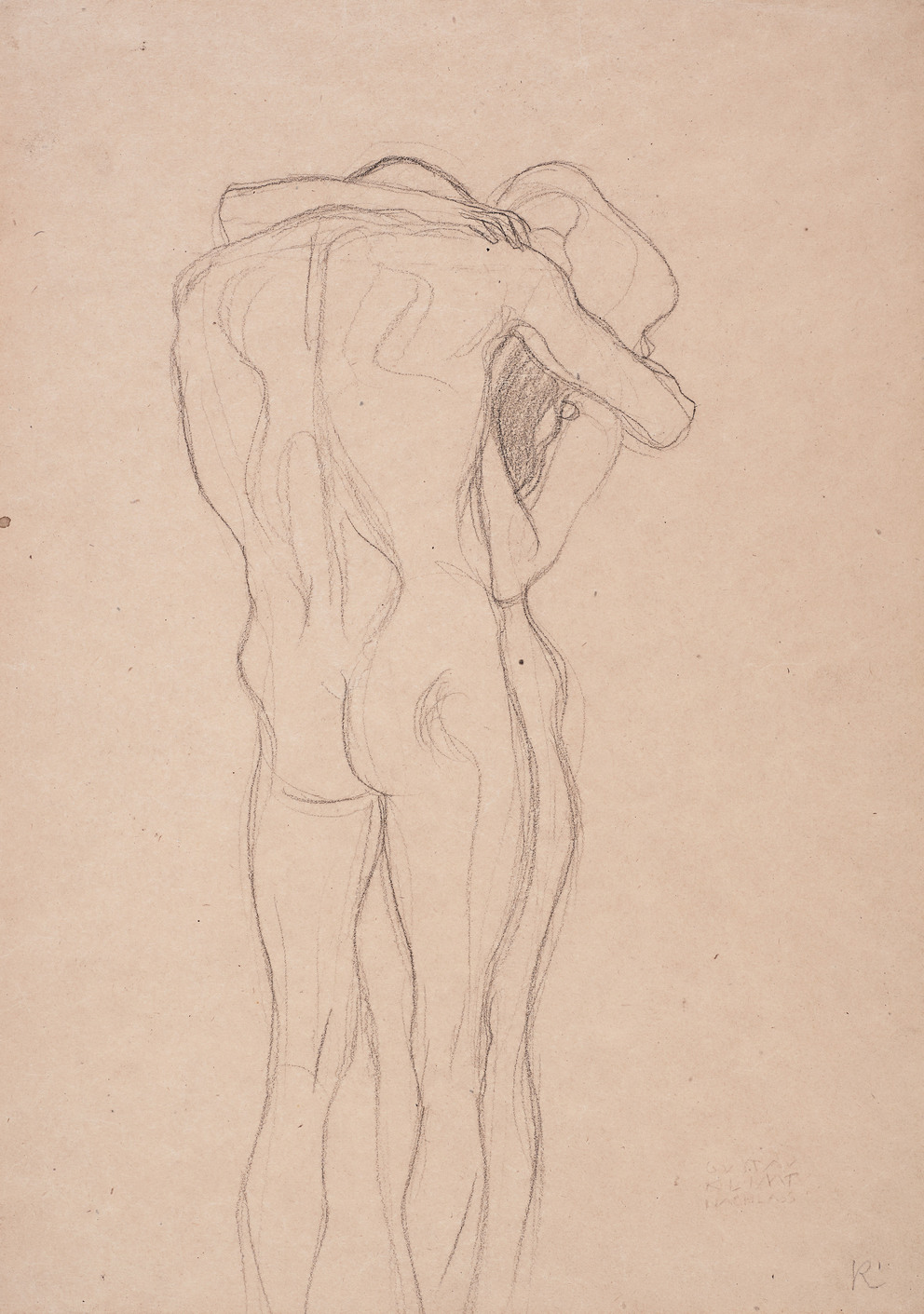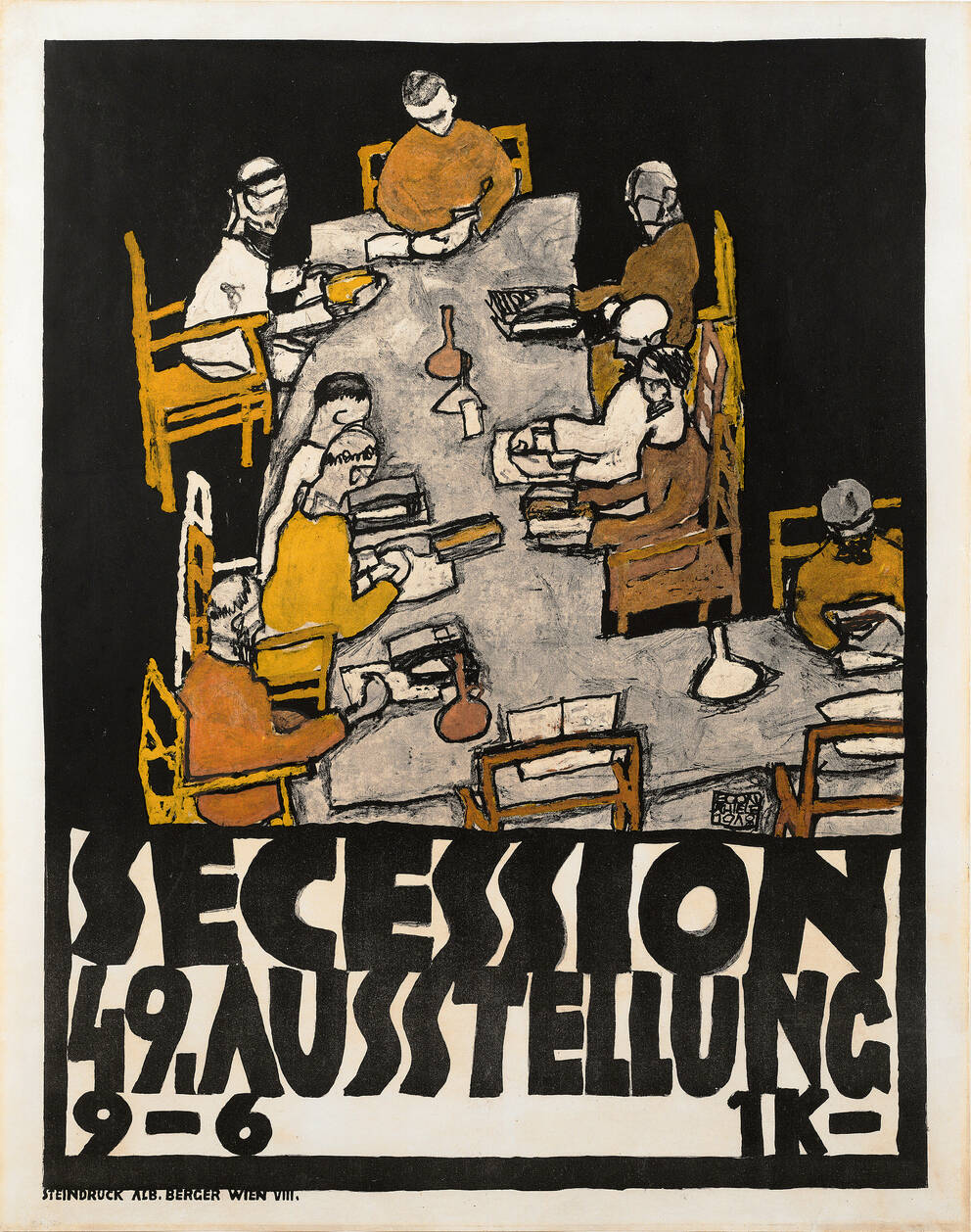Secession
The Birthplace of Viennese Modernism
The year 1897 marked a turning point in the Danube metropolis, with the foundation of the Vienna Secession heralding the beginning of Modernism in Austrian visual arts. Among the artists’ association’s founding members were Gustav Klimt (1862–1918), Koloman Moser (1868–1918), Carl Moll (1816–1945), Josef Hoffmann (1870–1956) and Joseph Maria Olbrich (1867–1908). These artists espoused a paradigm shift within the Austrian art scene, and made it their mission to create a platform for contemporary and international art. The association’s name – Ver Sacrum (“Holy Spring”) – illustrated the desire to expedite a new artistic awakening, and also became the title of its art magazine founded the same year as the Secession’s mouthpiece. In 1898, Olbrich designed the Secession’s exhibition venue on the Naschmarkt – a building which manifested all the new ideas of the association.





